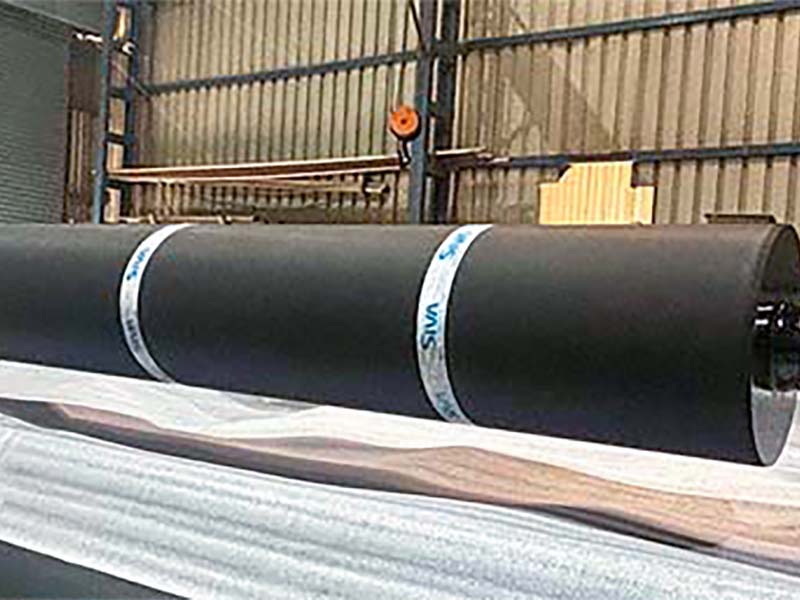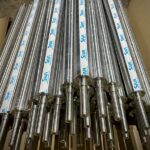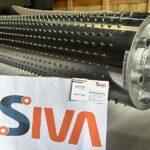Importance of Printing Rubber Rollers in the Printing Industry
In the fast-paced world of commercial printing, efficiency, precision, and consistency are non-negotiable. Whether it’s packaging, labels, or newspapers, the printing process demands tools and technologies that deliver high-quality results at scale. One such essential component in the printing mechanism is the rubber roller. These unsung heroes of the printing industry play a pivotal role in ensuring seamless ink transfer, pressure control, and overall printing precision.
This blog explores the critical importance of printing rubber rollers and their impact on printing operations, highlighting how these rollers support quality, productivity, and longevity in machinery. Whether referred to as rubber coated roller, rubber covered rollers, or simply industrial rollers, they form the heart of every press system.
The Core Role of Rubber Rollers in Printing Equipment
Rubber rollers are cylindrical tools that transfer ink, water, or substrate during the printing process. They ensure even distribution of ink across the printing plate and maintain consistent contact with the substrate material (like paper, plastic, or fabric). The rubber coating gives the roller just the right amount of flexibility and grip needed to make this interaction clean and efficient.
Without these rollers, high-speed printing operations would suffer from ink smudging, uneven color application, and material misalignment. Therefore, rubber rollers are essential for both offset and flexographic printing technologies, among others.
Ink Transfer and Consistency
One of the most significant functions of a rubber covered roller is its ability to transfer ink consistently and evenly. Ink needs to be applied in controlled quantities to prevent blotches or fading, which can ruin an entire batch of prints. A high-quality rubber roller ensures that the ink layer remains even across different parts of the print surface, reducing waste and increasing print fidelity.
Especially in offset printing, where the plate does not directly contact the printing substrate, rubber rollers (like the blanket roller) are crucial in transferring the ink properly between surfaces. This middle layer allows for high-speed production while maintaining image quality.
Customization for Specific Applications
Rubber coated rollers can be customized to suit specific operational needs. Whether it’s high temperature resistance, chemical exposure, or a requirement for anti-static properties, different types of rubber compounds—like nitrile, EPDM, silicone, or polyurethane—can be used.
This ability to fine-tune the hardness (durometer), texture, and coating thickness allows industries to choose rollers perfectly matched for their application. This level of customization is not possible with traditional metal rollers, making rubber-coated variants a more efficient choice in many scenarios.
Precision Pressure Control
Every printing job requires a specific pressure setting to ensure that the ink adheres properly without damaging the substrate. Rubber coated rollers are specially designed to absorb and regulate pressure, allowing for minor adjustments during high-speed runs. This flexibility is critical when printing on different materials with varying thicknesses and textures.
The ability of rubber rollers to maintain appropriate tension and pressure without degrading quickly is a key reason why they are preferred over metal or plastic rollers in printing environments.
Durability and Resistance to Chemicals
Printing involves a range of chemicals — from inks and solvents to cleaning agents. The rubber compounds used in manufacturing industrial rollers are engineered to withstand harsh conditions and frequent cleaning cycles. This chemical resistance ensures that the rollers maintain their shape, elasticity, and performance over time.
Manufacturers of rubber coated rollers, like Siva Rollers in Ahmedabad, use high-grade elastomers like Nitrile, EPDM, and Polyurethane, which are selected based on the roller’s application, whether it’s for water-based inks, UV inks, or solvent-based inks. This customisation enhances roller longevity and performance.
Heat Resistance in High-Speed Printing
With the evolution of high-speed printing presses, heat build-up has become a common challenge. This heat can affect the roller’s performance and even deform the rubber surface. Advanced rubber rollers are now made with materials that can tolerate these thermal conditions without compromising the roller’s dimensional stability.
This makes rubber covered rollers a reliable choice for long production runs, where temperature stability directly affects print quality and equipment life.
Surface Customization for Different Printing Needs
Not all printing processes are the same — from gravure to flexo and offset printing, the technical requirements differ. Fortunately, industrial rubber rollers can be customized in terms of surface texture, hardness (durometer), and chemical composition to match these specific printing needs.
For example, a flexographic press might require soft rubber rollers to accommodate flexible printing plates, whereas offset printing might demand harder rollers for sharper image transfer. This adaptability makes rubber rollers essential for multi-purpose printing machines.
Reduced Downtime and Maintenance
High-quality rubber coated rollers are known for their durability and low-maintenance performance. This directly impacts the efficiency of the printing operation. Less downtime means higher productivity, faster turnaround times, and reduced costs in terms of repair and replacement.
Investing in superior rubber rollers, like those manufactured by Siva Rollers, ensures that the rollers retain their original performance for extended periods, even under continuous use in demanding environments.
Eco-Friendly and Cost-Efficient
Modern rubber covered rollers can be refurbished or re-coated multiple times before being replaced. This sustainability factor not only reduces waste but also brings down operating costs. By refurbishing the roller core and applying a new rubber layer, printing companies can extend the roller’s life while maintaining optimal performance.
This eco-conscious option is widely preferred in industries looking to cut costs and reduce their carbon footprint — making rubber rollers a cost-effective and sustainable printing solution.
Applications Beyond Ink Transfer
While ink transfer is a primary function, industrial rubber rollers are used in several other parts of the printing process — from web guiding to laminating, embossing, and coating. These rollers are critical in maintaining alignment, applying finishes, and improving substrate handling throughout the press line.
Their versatility and importance across multiple printing functions make them an indispensable part of the printing infrastructure.
Trusted by Leading Printing Rubber Roller Manufacturer– Siva Rollers
When it comes to selecting reliable and high-performing rubber rollers, the manufacturer you choose makes a big difference. Siva Rollers, based in Ahmedabad, India, is recognized as one of the leading manufacturers of rubber rollers, rubber coated rollers, and industrial rollers for the printing industry.
With decades of expertise and precision engineering capabilities, Siva Rollers delivers customized solutions that meet the needs of modern printing machinery. Their rollers are trusted by printing houses across India for their consistency, durability, and superior performance.
Why Rubber Rollers are Indispensable
From ensuring ink consistency and pressure control to providing chemical and heat resistance, rubber rollers are vital to the quality and efficiency of printing operations. Their role extends beyond ink transfer to influencing maintenance schedules, production costs, and even environmental impact.
As printing technology evolves, the demand for high-performance rubber coated rollers and industrial rollers will continue to grow. By partnering with trusted manufacturers like Siva Rollers, printing companies can ensure smooth operations and top-tier print quality — every time.



